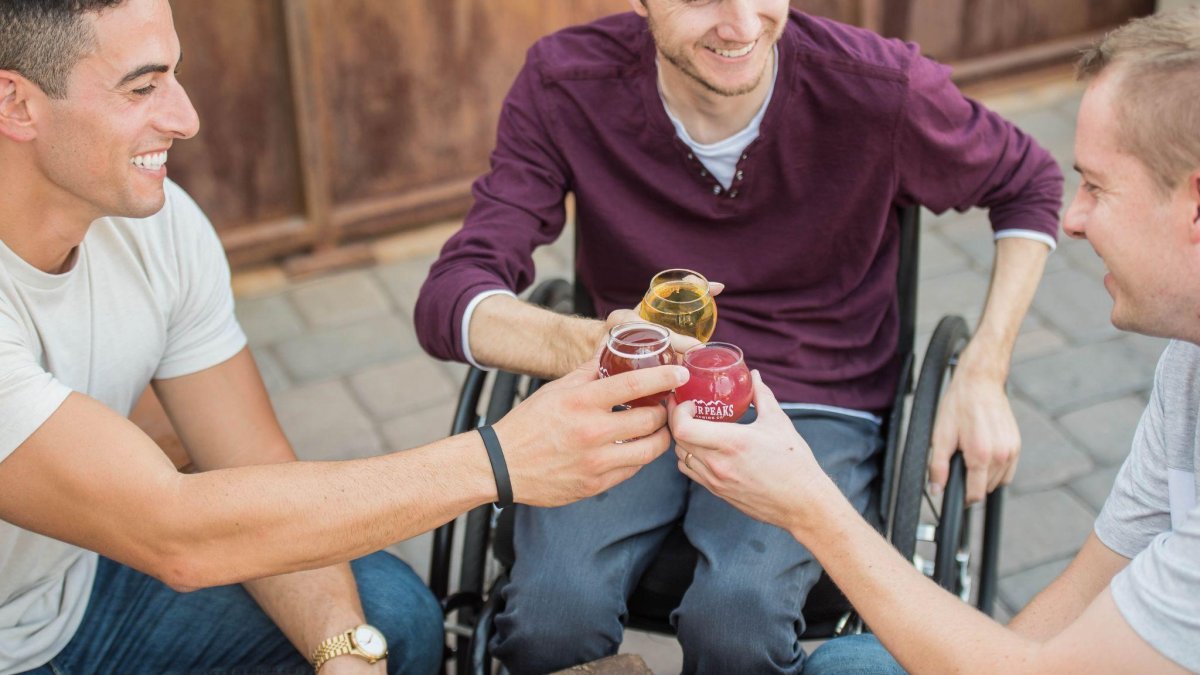
Imagine the joy of stepping into a home that embraces everyone, regardless of their abilities. Designing a disability-friendly home is a noble endeavor that requires careful thought and consideration. If you avoid a few common mistakes and adopt an inclusive mindset, you will be able to create a haven that promotes accessibility, comfort and allows all its residents to be independent. Let us learn about a few key mistakes to steer clear of and know how to make your home a truly disable-friendly haven.
Seek Professional Guidance:
You may find it daunting to start the journey of creating a disability-friendly home. You can opt for involving professionals such as occupational therapists, accessibility consultants, or architects specializing in universal design. They have the required expertise to provide valuable insights, which will ensure that your home meets the unique needs of individuals with disabilities. Their guidance will empower you to make informed decisions and avoid critical oversights.
Embrace the Principles of Universal Design:
Universal design is not just about merely complying with accessibility standards. It focuses on creating environments that cater to everyone’s needs, no matter what their age or ability is. You need to prioritize features such as wider doorways and hallways so that wheelchairs and mobility aids can be easily accomodated. You can ensure bathrooms have grab bars, roll-in showers, and other accessible fixtures. If you embrace such universal design principles, you will actively be able to foster inclusivity within your home.
Install a Stairlift
First and foremost, a disabled person can have a renewed sense of independence with the help of a stairlift. With it the daunting task of climbing stairs becomes possible, allowing individuals with mobility challenges to move between different levels of their home effortlessly. No longer will they have to rely on others for assistance or feel limited by their physical abilities. With a stairlift, they can regain control over their movement and be able to easily access all areas of the home.
Along with these practical benefits, a stairlift also adds a touch of comfort and gives you peace of mind. Imagine the relief of knowing that your loved ones are now able to safely navigate the stairs without the risk of accidents or falls. Stairlifts are designed with advanced safety features such as seat belts, sturdy handrails, and sensors that detect obstacles. This ensures a secure ride without having to worry about getting into an accident. The disabled and their family members will be able to relax and enjoy the beauty of their home now that they have the peace of mind that a stairlift brings.
This allows individuals with disabilities to fully participate in family gatherings, enjoy the common spaces, and take part in everyday activities. Whether it’s joining in a lively conversation in the living room or gathering around the dining table for meals, a stairlift ensures that no one feels left out. It fosters a sense of togetherness and helps to reinforce the bonds that make a house a true home. A leading stairlift provider will be able to supply you with just the right type of solution for your needs by considering all your requirements.
Optimize Maneuvering Space:
Are you unable to navigate freely within your own home due to cramped spaces? You can easily avoid this mistake by making sure that there is ample space for wheelchair users and mobility aids. You can make doorways, hallways wider, and have well-planned room layouts that allow the disabled to move about freely without any obstructions or tight turns. Having ample maneuvering space will give all residents a sense of freedom.
Illuminate with Care:
It is imperative that you have good lighting in your home, particularly if you have individuals with visual impairments living there. Having adequate illumination enhances visibility and reduces hazards. You should avoid dark areas, as well asharsh lighting that may cause glare. Additionally, you should incorporate contrasting colors between surfaces and objects so that people with low vision can easily differentiate between them. By being cosiderate with your lighting choices, you will be able to create a safe and welcoming environment for all.
Flooring Matters:
The accessibility of your home for disabled inhabitants can be significantly increased with the right flooring. You must avoid high-pile carpets or rugs as they will impede mobility aids or wheelchairs. Rather, you should opt for surfaces that are smooth and slip-resistant, such as hardwood, laminate, or low-pile carpeting. If you select the right flooring materials, you not only facilitate movement but also contribute to the overall aesthetics of your disability-friendly home.
Transform Bathrooms into Accessible Retreats:
If you want your bathrooms to be easily accessible to the disabled residents, you have to pay close attention to its design. You should avoid common pitfalls, such as not having enough space for wheelchair users, inadequate grab bars, non-slip flooring, or not having the proper heights for sinks and toilets. If you adhere to accessibility guidelines when designing your bathrooms you will allow the residents to maintain their dignity, independence, and personal hygiene.
Simplify the Technology:
If you can properly integrate the use of technology in your design, you can truly revolutionize accessibility for the disabled. But do keep in mind that complex systems may become overwhelming for them. rather , you should prioritize incorporating user-friendly solutions that have intuitive controls, so that individuals with disabilities can access and utilize the technology on their own. By having simplified technology throughout your home, you make getting information, communication, and entertainment easier, making the house more inclusive.
Ergonomics and Comfort:
When you are designing a disability-friendly home, you should prioritize ergonomics and comfort. You can do this by selecting furniture and appliances that offer adequate support, and are easily reachable, and adjustable. By promoting proper posture, you can reduce the risk of strain or injury, and enhance overall well-being. You must remember, a comfortable home is one that is welcoming for all.
Organization for Independence:
It is crucial to have effective storage solutions in a disability-friendly home. You must avoid clutter and make sure that the items that are frequently used can be accessed easily. Implement storage options within reach, reducing the need for excessive bending, reaching, or lifting. If you promote independence by organizing effectively, you will be empowering residents to get around effortlessly.
Future-Proof Adaptability:
You should keep in mind the future adaptability while addressing the current needs of the disabled residents. You will need to incorporate flexible design elements, such as features that are easily adjustable, or pre-wiring for assistive technologies that might be introduced in the future. If you effectively plan for the future, you will easily be able to accommodate any changing needs. This way you will be able to ensure your home remains a welcoming space for years.
Parting Thoughts
If you are able to avoid these mistakes and have an inclusive mindset, you can design a haven that celebrates diversity and embraces the needs of all residents. By weaving these considerations into the fabric of your home, you will foster an environment that embodies inclusivity, accessibility, and comfort. The ultimate goal is to create homes where everyone feels valued and cherished. By avoiding these mistakes and following these tips, you will be able to design a home that will be welcoming to all its residents, regardless of their age or special needs.
Henrik Langley
Related posts
Stay connected
Today's pick
- The Importance of Professional Handyman Services for Your HomeYour home is your sanctuary, a place of comfort and security, but maintaining it can be a daunting task. From routine maintenance to unexpected repairs, there’s always something that needs attention. While many homeowners might be tempted to tackle these jobs themselves, not all tasks... The post The Importance of Professional Handyman Services for Your […]

